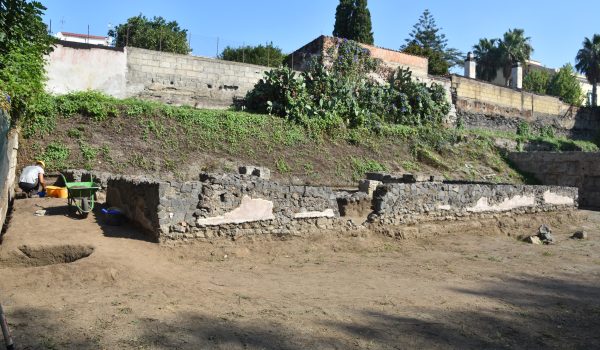The 2017 interventions brought about twenty iron spearheads to light, a bronze shield band probably belonging to the shield, and bucchero vases made in Campania, dating from between the end of the VII century and the first half of the VI century B.C. These vase forms are frequently found in fixed and repeated associations, with an open and closed form, reflecting ritual gestures that right now we can decipher only in part. Some votive offerings hailing from all over the Mediterranean have been found, including the Attic lekythoi with black figures, the Corinthian aryballoi, the Ionic boot-shaped ointment containers, unguentaria made of faience and amber beads. The excavations also uncovered twenty-five fragments of bucchero pottery with engraved inscriptions, crosses, five-pointed stars and saplings, and one object that actually has an engraved declaration of ownership: “I am Manie’s cup, don’t take me!”. A fragment of a ring-shaped base with an engraved inscription confirmed the deity to whom the sanctuary was dedicated, i.e. APA meaning ‘father’, which is a divine epithet documented in several places of worship in the Etruscan world and often the only epigraphic reference to the worshipped male deity, associated in many cases with female paredroi.

Fondo Iozzino Area
APP EXCAVATIONS AND RESEARCH – FONDO IOZZINO AREA
APP CONTACT PERSON Luana Toniolo
Investigations in the sacred area of Fondo Iozzino were carried out thus completing the exploration of the west sector of the sanctuary. During earlier research, fundamental evidence was uncovered to help reconstruct the cultural practices in ancient Pompeii. There was a bronze shield, and the biggest corpus of bucchero pottery in Southern Italy with engraved inscriptions.

